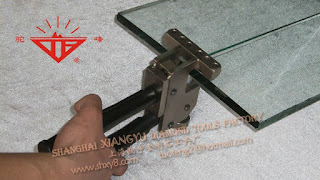Once you have determined that you need a light box, buying or building seem to be the two options available.
It used to be that when hospitals were changing from film to screen based x-ray results, that the light boxes were available on the second hand market very cheaply. There may still be many available on the various auction lists.
The alternative is to make one for yourself. The materials are easily available and can be assembled with a little knowledge of wood working and basic electrical knowledge. The first element is to decide on what you want – the requirements.
Requirements
The top surface needs to be firm and scratch resistant. Toughened or laminated glass is good for this. The larger area covered, the thicker the glass needs to be, or there needs to be support under the glass to avoid breakage from pressure. The toughened or laminated glass resists breaking from dropping material onto the light box.
You need to have daylight corrected light sources for you light box, especially if you are doing any glass selection on it. Fluorescent tubes are easily available, but other light sources can be used. You need to have ventilation to allow the heat generated by the lights to disperse. Fluorescent tubes do not generate much heat and so are the common choice.
You need diffused, even light across the whole surface. This requires a diffuser and there are a number of solutions. You can sandblast the back of the top sheet, but I find this does not provide enough dispersion. You can sandblast both sides, which gives better dispersion of the light, but is difficult to clean and so needs another sheet on top. The best dispersion of light comes from using a sheet of opaque acrylic with about 80% light reduction. The difficulty with this is that it is flexible and needs support if any glass cutting is going to be done on the surface. I place the acrylic sheet underneath a sheet of 6.4mm laminated glass. This gives both solidity and dispersion.
Light is a central consideration in building the light box. The intensity is controlled by two things mainly – The number of lumens and the intervals of the light sources. The best way toward even light distribution even with good dispersion sheets, is to have multiple light sources. It would be possible to pack the box with light fixtures, but this is expensive and generates a lot of heat. It also may make the light too intense to be comfortable to work with. In general, fluorescent tubes placed at about 150mm centers apart will provide all the light you will need.
To make sure you get all the benefit of the light you need to build an enclosed box with ventilation holes or slots that is painted matt white on the inside. This allows the light to be reflected upwards through the surface with out bright spots that can be caused with gloss paint.
You need to consider the size of the box in terms of surface area. This will relate to the space you have available and the scale that you work at. In addition to a separate surface the box can be an area of the work bench, or covered by a separate work board – whether permanent or temporary.
The height of the box will need to be considered, Will you be sitting or standing while working at the light box. It needs to be high enough in either case for you to maintain a straight back.
You need to consider the ability to screen parts of the light so the light is directed only at the work area. Large areas of light will overwhelm the glass, making it appear darker than the finished piece will actually be.
You need to think about the amount of flexibility your box requires to have. If you want to use it as part of your display equipment, it needs to be mobile and relatively light. This will interact with the materials to be used in construction.
Additional information:
Uses
Light box requirements
















